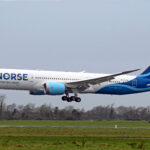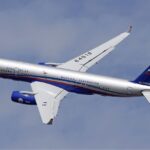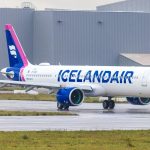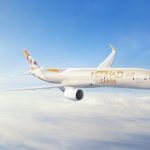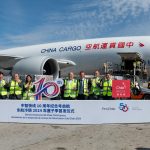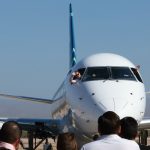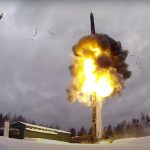EVA Air became the first airline in Asia to install AeroSHARK technology, developed by Lufthansa Technik and BASF, which reduces aerodynamic drag and optimizes fuel consumption. The Taiwanese airline will fit its fleet of nine Boeing 777F freighters with the innovative riblet films that will cover the fuselage and engine nacelles.
The first EVA Air freighter aircraft to be installed with AeroSHARK technology was B-16786, installed at Taipei Taoyuan International Airport, led by Lufthansa Technik and executed by Evergreen Aviation Technologies Corporation (EGAT). The aircraft is scheduled to return to commercial service in early September.
The placement of the AeroSHARK on EVA Air’s nine Boeing 777Fs results in annual savings of more than 2,500 metric tons of kerosene and more than 7,800 metric tons of carbon dioxide emissions.
“EVA Air is continually moving towards its goal of achieving net zero carbon emissions by 2050 by constantly seeking the latest technologies to reduce our carbon footprint. We are delighted to collaborate with Lufthansa Technik on the application of fuel-saving AeroSHARK surface technology to our 777F freighters. This innovation not only reduces fuel consumption, but also CO2 emissions. EVA Air will continuously monitor the actual fuel savings benefits and will continue to evaluate additional aircraft to equip with this technology,” said Albert Liao, Executive Vice President of EVA Air’s Corporate Planning Division.
Lufthansa Technik is currently a Supplemental Type Certificate (STC) holder for the AeroSHARK modification of two Boeing 777 aircraft, which are already in full service with several airlines worldwide. In addition to EVA Air’s first AeroSHARK-equipped 777F, several other aircraft already have this technology installed, including Lufthansa Cargo’s 777Fs, SWISS’ 777-300ERs and soon on Austrian Airlines’ 777-200ERs. The entire EVA Air 777F fleet is expected to be equipped by 2027.
In addition, Lufthansa Technik and BASF aim to further develop AeroSHARK to help more airlines worldwide achieve their sustainability goals. Current development priorities include the approval of additional aircraft types and increasing areas. In preliminary model calculations, AeroSHARK technology could avoid up to three percent of carbon dioxide emissions during its peak expansion phase.



